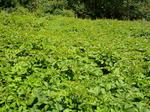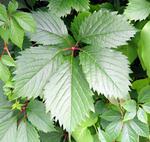| Home | About BFIS | Species List | Risk Analysis | Harmonia⁺ | Resources | Outputs | Mailing List | Registry |
| Contact us | Login | | ||||||
 |

©
Etienne Branquart

©
Etienne Branquart

©
Hermann Falkner

©
Paul Montagne

©
Paul Montagne
 Naturalization in Belgium Naturalization in Belgium
 Invasiveness Invasiveness
More on invasiveness: Originally observed in man-made habitat, these popular garden plants are increasingly observed in natural habitats like coastal dunes, riparian habitats and wood margins (P. inserta) or rock outcrops (P. quinquefolia). They usually thrives on nutrient-rich soils. Seeds are dispersed by birds over long distances.
 Distribution in Belgium Distribution in Belgium
Established populations

Endangered areas

 Impacts on Species Impacts on Species
 Impacts on Ecosystems Impacts on Ecosystems
More on impacts: Those vines form dense curtains of interwined stems that may cover, outcompete and kill native vegetation; they may also overtop shrubs and canopy trees. Its cover is denser than native climbers like Clematis or Humulus species. However, competitive effects are rarely reported in the literature. Plant extracts have allelopathic properties.
References:
Blinkova O, Makarenko N, Raichuk L, Havrylnuk Y, Grabovska T & Roubík (2023)
Ecological Questions 34(1): 35-44.
CPS-SKEW (2006)
From online fact sheets of the Swiss Commission for Wild Plants Conservation.
Csiszar, A. (2009)
Allelopathic effects of invasive woody plants species in Hungary.
Acta Silv. Lign. Hung. 5 : 9-17.
Dolkin-Lewko A & Zajaczkowska U (2022)
Sylwan, 166(04).
Keil, P. & Loos G.H. (2005)
Preliminary account of ergasiophygophytic and xenophytic trees, shrubs and subshrubs in the Central Ruhrgebiet (Germany).
 Electronic Publications of the Biological Station of Western Ruhrgebiet 3: 1-12.
Kozlovskiy BL, Fedorinova OI & Kuropyatnikov MV (2020)
Russian journal of biological invasions 11: 41-46.
Krivanek, M. & Pysek, P. (2006)
Predicting invasions by woody species in a temperate zone: a test of three risk assessment schemes in Czech Republic.
Diversity and Distributions 12: 319-327.
Lambinon, J., Delvosalle, L. & Duvigneaud, J. (2004)
Nouvelle fore de la Belgique, du Grand-Duché de Luxembourg, du Nord de la France et des régions voisines.
Editions du Patrimoine du Jardin botanique national de Belgique, Meise.
Lohmeyer, W. & Sukopp, H. (2001)
In: Brandes, D. (ed.) Adventivpflanzen. Beiträge zur Biologie, Vorkommen und Ausbreitungsdynamik von Archäophyten und Neophyten in Mitteleuropa, vol 8. Universitätsbibliothek Braunschweig, Braunschweig, pp 179-220.
Panasenko NN & Anishchenko LN (2018)
Influence of invasive plants Parthenocissus vitacea and Vinca minor on biodiversity indices of forest communities.
 Contemporary problems of ecology, 11(6), 614-623.
Schnitzler, A. & Aumaitre, D. (2008)
In: Proceedings of the 12 world lake conference.
Van Landuyt, W., Hoste, I., Vanhecke, L., Van den Bremt, P. Vercruysse, W. & De Beer, D. (2006)
Atlas van de Flora van Vlaanderen en het Brussels gewest.
Nationale Plantentuin en het Instituut voor Natuur- en Bosonderzoek i.s.m. Flo.Wer vzw.
Verloove, F. (2006)
Scripta Botanica Belgica 39, 89 pp.
Weber, E. & Gut, D. (2004)
Assessing the risk of potentially invasive plant
species in central Europe.
Journal for Nature Conservation12: 171-179.
|
 |
 |




